Home>Storage Ideas>Kitchen Storage>Speedy Kitchen Cleaning Tips To Cut Cleaning Times In Half
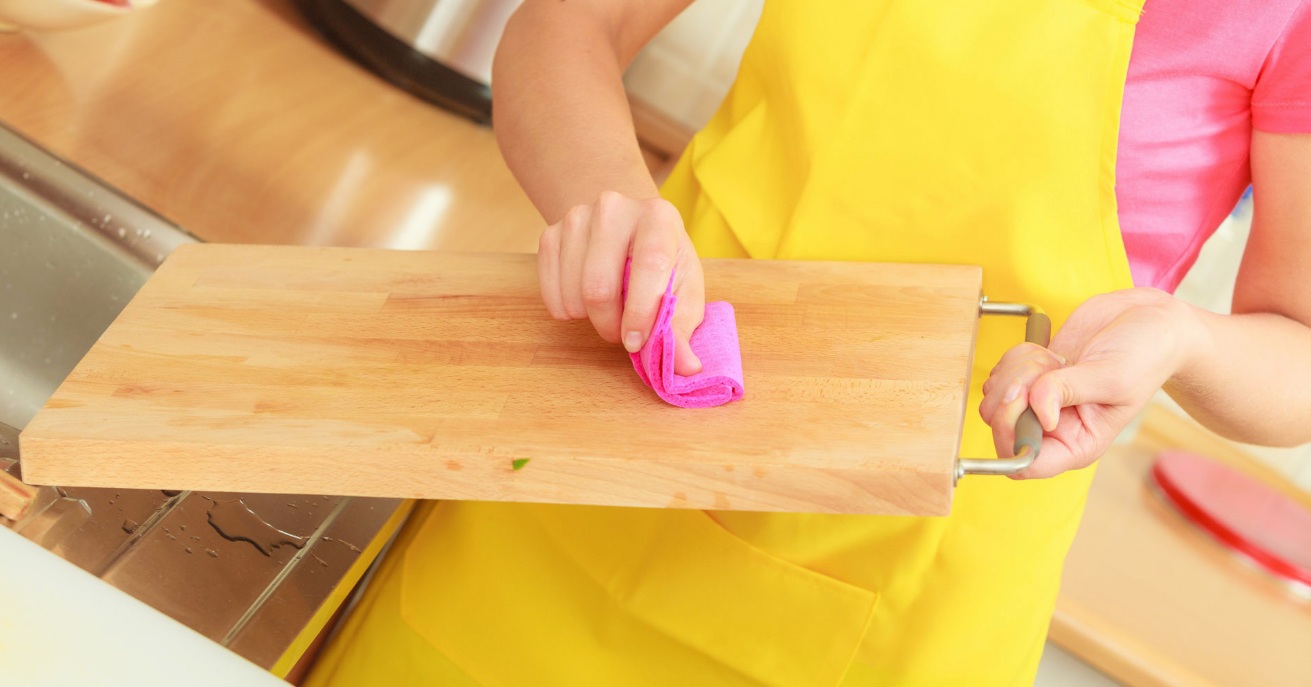

Kitchen Storage
Speedy Kitchen Cleaning Tips To Cut Cleaning Times In Half
Modified: January 9, 2024
Discover speedy kitchen cleaning tips and storage ideas to cut cleaning times in half. Transform your kitchen into a clutter-free and efficient space.
(Many of the links in this article redirect to a specific reviewed product. Your purchase of these products through affiliate links helps to generate commission for Storables.com, at no extra cost. Learn more)
Introduction
Welcome to the wonderful world of kitchen storage ideas! If you’re someone who loves spending time in the kitchen, you know how important it is to have a well-organized and efficient space. From storing your pots and pans to ensuring every utensil has its place, kitchen storage can make a world of difference in your cooking experience.
In this article, we’ll explore some creative and effective kitchen storage ideas that will not only help you maximize the available space but also add a touch of style to your kitchen. Whether you have a small kitchen with limited storage options or a larger space that needs some organizational magic, these ideas are sure to inspire you.
We’ll cover a wide range of storage solutions and organization tips, from utilizing vertical space to creatively repurposing everyday items. Whether you’re looking to create a clutter-free countertop or need smart ideas for organizing your pantry, this article has got you covered.
By implementing these kitchen storage ideas, you’ll not only make your daily cooking routine more efficient but also create a visually appealing and welcoming space. So, let’s dive into the world of kitchen storage solutions and transform your cooking area into an organized and stylish haven!
Key Takeaways:
- Maximize kitchen storage with vertical space, drawer dividers, and stackable containers. Implement time-saving cleaning techniques to maintain a clean and organized kitchen effortlessly.
- Cultivate a mindset of cleanliness and organization in your kitchen. Involve your family in maintaining a functional and enjoyable cooking space.
Read more: How To Cut A Dresser In Half
Decluttering and Organizing
One of the first steps to achieving an organized and efficient kitchen is decluttering. Begin by going through your kitchen cabinets, drawers, and pantry to get rid of any items you no longer need or use. Donate or discard items that are expired, broken, or simply taking up valuable space.
Once you have decluttered, it’s time to start organizing. Consider investing in drawer dividers, cabinet organizers, and storage baskets to maximize your storage space. Group similar items together, such as baking essentials, cooking utensils, and spices, and designate specific areas for each category.
Another effective organization tip is to make use of vertical space. Install hooks or racks on the inside of cabinet doors to hang measuring cups, pot holders, and other frequently used items. Mount a magnetic strip on the wall to store knives, freeing up valuable drawer space.
When organizing your pantry, use clear, stackable containers for storing dry goods such as flour, sugar, and pasta. Label each container so you can easily identify its contents. This not only keeps your pantry neat and tidy but also helps prevent food waste by keeping items visible.
Consider using a lazy Susan in your refrigerator to make accessing items at the back easier. This rotating tray allows you to effortlessly reach condiments and other items without having to shuffle things around.
Finally, don’t forget to establish a system for maintaining your newly organized kitchen. Take a few minutes each day to put things back in their designated places and resist the temptation to accumulate unnecessary clutter. Keeping things organized on a daily basis will make a significant difference in the long run.
By decluttering and organizing your kitchen, you’ll create a clean and efficient space that not only looks visually appealing but also makes it easier to find and access the items you need while cooking.
Pre-treating Stains
Stains and spills are a common occurrence in the kitchen, but they don’t have to be a major hassle. By pre-treating stains before they set, you can save yourself time and effort during the cleaning process.
One effective solution is to create a simple mixture of warm water and dish soap. This gentle yet effective cleaner can be used to pre-treat a variety of stains, including grease splatters, coffee stains, and food spills. Simply apply a small amount of the mixture to the stained area, let it sit for a few minutes, and then wipe it clean with a damp cloth.
If you’re dealing with stubborn stains on your countertops or cutting boards, try using a paste made of baking soda and water. Apply the paste to the stain, let it sit for a few minutes, and then scrub it away with a sponge or scrub brush. The abrasive nature of baking soda helps to break down tough stains without scratching the surface.
For more stubborn grease stains on stove burners or range hoods, consider using a degreaser. There are many commercial degreasers available on the market, but you can also make your own using ingredients such as vinegar, baking soda, and lemon juice. Apply the degreaser to the stain, let it sit for a few minutes, and then wipe it away with a damp cloth or sponge.
When it comes to pre-treating stains on fabric, such as tablecloths or kitchen towels, it’s important to act quickly. Blot the stain with a clean cloth or paper towel to remove any excess liquid, then apply a stain remover or laundry detergent directly to the stain. Let it sit for a few minutes before laundering as usual.
Remember, the key to pre-treating stains is to address them as soon as possible. The longer a stain sits, the harder it becomes to remove. By taking a few extra minutes to pre-treat stains before cleaning, you can save yourself time and ensure a spotless and stain-free kitchen.
Using Multi-purpose Cleaners
When it comes to cleaning your kitchen, having a variety of specialized products can quickly add up. Instead, consider using multi-purpose cleaners that can handle a wide range of cleaning tasks.
One versatile option is a vinegar and water solution. Mix equal parts white vinegar and water in a spray bottle and use it to clean countertops, appliances, and even floors. Vinegar is naturally antibacterial and cuts through grease, making it an effective cleaner for multiple surfaces in your kitchen.
Baking soda is another multi-purpose cleaner that can tackle many cleaning challenges. It acts as a gentle abrasive, making it ideal for scrubbing sinks, stovetops, and oven interiors. Sprinkle baking soda on a damp sponge or cloth and scrub away grime and stains.
For tough stains and baked-on grease, a mixture of baking soda and hydrogen peroxide can work wonders. Apply the paste to the stained area, let it sit for a few minutes, and then scrub it off with a sponge or brush. This combination is particularly effective for cleaning stubborn residue on baking sheets and oven racks.
In addition to homemade solutions, there are also multi-purpose cleaners available in stores that are specifically formulated to tackle various surfaces in the kitchen, from countertops and appliances to tile floors and stainless steel. Be sure to read the labels and choose a cleaner that is safe for your specific surfaces.
Using multi-purpose cleaners not only simplifies your cleaning routine but also saves you money by eliminating the need for multiple specialized products. It’s important, however, to always test any cleaner in a small, inconspicuous area before using it on a larger surface to ensure compatibility and avoid damage.
Remember, when using any cleaner, whether homemade or store-bought, it’s essential to follow the instructions and safety precautions provided. Wear gloves to protect your hands and ensure proper ventilation in the area you’re cleaning.
By utilizing multi-purpose cleaners, you can streamline your cleaning process and keep your kitchen looking fresh and spotless with minimal effort.
Utilizing Time-Saving Tools
When it comes to efficiently cleaning your kitchen, having the right tools can make a world of difference. By investing in time-saving tools, you can cut down on cleaning time and make the process more convenient and enjoyable.
One essential tool for a quick and efficient kitchen cleaning routine is a microfiber cloth. These ultra-soft and highly absorbent cloths are perfect for wiping down countertops, cleaning appliances, and polishing stainless steel surfaces. They are reusable and can be washed and used again, making them an eco-friendly choice.
An electric handheld vacuum is another valuable tool to have in the kitchen. It allows you to quickly and effortlessly clean up crumbs and debris from countertops, tables, and floors. Choose a model with different attachments to reach areas that are difficult to access.
When it comes to floor cleaning, a steam mop can be a game-changer. It uses hot steam to sanitize and clean hard floors, eliminating the need for buckets of water and harsh chemicals. Steam mops are quick to heat up and provide a thorough, streak-free clean.
A dishwasher is a time-saving tool that can greatly simplify your dishwashing routine. Rather than spending time hand washing dishes, simply load them into the dishwasher and let it do the work for you. Opt for a dishwasher with different cycles and energy-efficient features to meet your specific needs.
If you frequently use small appliances such as blenders, food processors, or stand mixers, consider keeping them on the counter for easy access. This eliminates the need to constantly take them out and store them away, saving you time and effort.
Utilize time-saving tools like slow cookers and pressure cookers to simplify meal preparation. These appliances allow you to set it and forget it, freeing up your time to do other tasks while your meal cooks. Plus, they often require minimal cleanup.
Investing in a garbage disposal can also save you time and effort in the kitchen. Rather than scraping food scraps into the trash, simply put them down the disposal and let it do the work for you. This helps to keep your kitchen clean and odor-free.
By utilizing time-saving tools, you can make your kitchen cleaning routine more efficient and enjoyable. These tools not only save you time but also make the process easier, allowing you to maintain a clean and organized kitchen without feeling overwhelmed.
Read more: How To Cut A Brick In Half
Cleaning in Zones
Cleaning the entire kitchen at once can be overwhelming and time-consuming. To streamline the process, consider cleaning in zones. By dividing your kitchen into specific areas and focusing on one zone at a time, you can clean more efficiently and effectively.
Start by creating a cleaning plan and dividing your kitchen into zones based on functionality. Common zones include the cooking area, food preparation area, and storage area. You can further break down these zones into smaller sections, such as countertops, cabinets, and appliances.
Once you have identified the zones, tackle one zone at a time. Begin by decluttering and organizing the area, putting away any items that are out of place. Then, move on to cleaning the surfaces. Wipe down countertops, clean appliances, and scrub sinks and faucets.
When cleaning in zones, it’s important to work from top to bottom. Start by dusting or wiping down higher surfaces such as cabinets or shelves before moving down to lower surfaces like countertops or floors. This ensures that any dust or debris that falls will be picked up as you move through the zone.
As you clean each zone, have all the necessary cleaning supplies and tools within reach. This will save you time and effort from constantly searching for items. Use caddies or baskets to keep the supplies organized and easily portable as you move from one zone to the next.
By focusing on one zone at a time, you can dedicate your full attention and effort to cleaning that specific area. This allows for a more thorough clean and ensures that no areas are missed or overlooked. It also gives you a sense of accomplishment as you complete each zone.
Incorporate regular maintenance into your cleaning routine to keep each zone in good condition. This includes wiping down surfaces on a daily basis, quickly tackling spills or stains, and regularly emptying and cleaning trash cans.
Cleaning in zones not only makes the process more manageable and efficient but also allows for a more thorough and detailed clean. By breaking down your kitchen into smaller sections, you can maintain a cleaner and more organized space with less stress and effort.
Streamlining Dishwashing
Dishwashing can often feel like a never-ending task, but there are ways to streamline the process and make it more efficient. By implementing a few time-saving tips, you can tackle your dishwashing duties with ease.
First, consider investing in a double sink or a dishwashing basin. This allows you to have one side for washing and the other for rinsing. By separating these tasks, you can work more efficiently and save time.
Before starting the dishwashing process, scrape off any excess food into the trash or compost bin. This helps prevent your sink from clogging and ensures that your dishwasher or washing water stays cleaner for longer.
If you have a dishwasher, load your dirty dishes as you go throughout the day rather than letting them pile up in the sink. This prevents a large backlog of dishes and makes the loading process quicker and easier.
When hand washing dishes, fill one side of the sink or a dishwashing basin with hot, soapy water. Leave the other side empty for rinsing. By having a designated area for each task, you can wash and rinse efficiently without wasting time.
If you have a large number of dishes to wash, consider purchasing a dish rack or drying mat to expedite the drying process. This allows you to wash more dishes without having to wait for them to air dry or use multiple dish towels.
Opt for eco-friendly dish soap that cuts through grease effectively. This reduces the need for excessive scrubbing and saves time and effort. Choose a soap that is gentle on your hands but still packs a punch when it comes to removing leftover food and grease from your dishes.
Another time-saving tip is to clean as you go while cooking. Wash utensils, cutting boards, and other tools while waiting for food to cook or while something is simmering on the stove. This minimizes the number of dishes that pile up in the sink, making the dishwashing process less daunting.
If you prefer to use the dishwasher, load your dishes strategically to maximize space and cleaning efficiency. Stack dishes properly, place utensils in the designated slots, and ensure that items are not blocking the spray arms. This way, you can fit more dishes in one load, saving you additional cycles and energy.
By implementing these simple tips, you can streamline the dishwashing process and make it quicker and more convenient. Whether you prefer hand washing or using a dishwasher, these strategies will help you stay organized and maintain a clean and tidy kitchen.
Quick Microwave Cleaning
The microwave is a frequently used appliance in the kitchen, and as a result, it can quickly accumulate food splatters and stains. Fortunately, there are quick and easy ways to keep your microwave clean and fresh.
An effective method for cleaning your microwave is to use the power of steam. Start by placing a microwave-safe bowl filled with water and a sliced lemon or a few tablespoons of vinegar inside the microwave. Heat the mixture on high power for several minutes until the steam fills the interior of the microwave.
Let the steam sit for a few minutes to loosen any stuck-on food particles. The steam will help to soften the stains and make them easier to wipe away. Afterward, carefully remove the hot bowl using oven mitts and use a damp cloth or sponge to wipe down the interior surfaces of the microwave.
For stubborn stains, you can create a paste by mixing baking soda and water. Apply the paste to the stained areas and let it sit for a few minutes to allow it to penetrate and break down the stains. Then, use a damp cloth to wipe away the paste along with the loosened grime.
If your microwave has a removable turntable or glass tray, don’t forget to remove and wash it separately with warm, soapy water. Wipe down the exterior of the microwave with a mild cleaning solution or a mixture of water and dish soap to remove any fingerprints or grease.
Regular maintenance is key to keeping your microwave clean. After each use, take a moment to wipe down the interior with a damp cloth or sponge to remove any splatters or spills. This prevents dried-on food from becoming stubborn stains that are more difficult to remove.
Another handy tip is to cover your food with a microwave-safe lid or microwave-safe plastic wrap to prevent food splatters in the first place. This will save you time and effort in cleaning up the microwave afterward.
Remember to always unplug your microwave before cleaning to ensure safety. Be cautious of hot surfaces and steam when handling hot water or heated solutions.
By implementing these quick cleaning methods and performing regular maintenance, you can keep your microwave clean and in top condition. A fresh and stain-free microwave not only looks better but also ensures that your food is heated evenly and without any lingering odors.
Speedy Oven Cleaning Hacks
Cleaning the oven may seem like a tedious and time-consuming task, but with a few handy hacks, you can make the process much quicker and easier.
One quick and effective method for cleaning your oven is by using baking soda and vinegar. Start by sprinkling a generous amount of baking soda on the bottom of your oven. Then, spray vinegar over the baking soda to create a bubbly reaction.
Let the baking soda and vinegar mixture sit in the oven for about 30 minutes or longer, depending on the level of grime. The bubbling action helps to break down grease and grime, making it easier to scrub away later.
Next, use a damp sponge or cloth to wipe away the baking soda and vinegar mixture. You may need to scrub in areas with tougher stains. Rinse the sponge or cloth frequently and continue wiping until all traces of baking soda and grime are removed.
For stubborn stains on the oven racks, you can create a soaking solution using a bathtub or a large basin. Place the racks in the tub or basin and fill it with warm water. Add a generous amount of dish soap and let the racks soak for a few hours or overnight. Then, scrub them with a brush or sponge and rinse thoroughly before drying.
If you have a self-cleaning oven, take advantage of this feature to save time and effort. Simply remove any excess food debris and follow the manufacturer’s instructions for running the self-cleaning cycle. Keep in mind that this method produces high heat and can produce strong fumes, so ensure proper ventilation during the cleaning process.
Prevention is key to maintaining a clean oven. Place a baking sheet or aluminum foil at the bottom of your oven to catch any drips or spills. This makes it much easier to clean up afterward.
Regular maintenance is also essential. Wipe down the oven interior after each use with a damp cloth or sponge to prevent built-up grease and food residue. By addressing spills and splatters immediately, you can avoid the need for heavy-duty cleaning later on.
Remember, safety should always be a priority when cleaning your oven. Wear gloves to protect your hands and ensure proper ventilation in the area while using cleaning solutions. Be mindful of hot surfaces and allow the oven to cool down before proceeding with the cleaning process.
By utilizing these speedy oven cleaning hacks and incorporating regular maintenance, you can keep your oven clean and in optimal condition. A clean oven not only enhances your cooking experience but also helps to maintain the quality and flavor of your food.
Read more: How To Store Half Cut Onion
Efficient Refrigerator Cleaning
Keeping your refrigerator clean is crucial for maintaining food safety and preventing odors. With some efficient cleaning methods and good organizational habits, you can tackle this task quickly and effectively.
Start by emptying the contents of your refrigerator. Check each item for expiration dates and discard anything that is past its prime or no longer safe to consume. This will give you a clean slate to work with.
Remove all removable shelves, drawers, and compartments from the refrigerator. Wash them with warm, soapy water, rinsing thoroughly, and drying them before placing them back in the refrigerator.
The interior of the refrigerator can be cleaned with a mixture of mild dish soap and warm water. Use a sponge or cloth to wipe down all surfaces, paying special attention to spills or stains. For stubborn stains or lingering odors, create a paste using baking soda and water and apply it to the affected areas. Let it sit for a few minutes before scrubbing and rinsing.
While the shelves and drawers are drying, take the opportunity to wipe down the exterior of the refrigerator. Use a gentle cleaning solution or a mixture of water and vinegar to clean the door handles, control panels, and other surfaces. Pay attention to stainless steel surfaces and use a stainless steel cleaner to restore their shine, if necessary.
As you place the items back into the refrigerator, make sure to organize them properly. Group similar items together and utilize clear storage containers or bins to separate different food categories. This not only keeps your refrigerator organized but also makes it easier to find what you need and avoid wasting food.
It’s important to regularly check for and clean any spills or leaks in your refrigerator. Addressing these issues promptly prevents them from becoming more difficult to clean and avoids the risk of cross-contamination.
To maintain a clean refrigerator, perform regular maintenance tasks such as wiping down spills immediately, checking for expired items, and giving the refrigerator a quick wipe down every week or two.
By following these efficient cleaning methods and establishing good organizational habits, you can keep your refrigerator clean and organized with minimal effort. A clean refrigerator not only ensures the freshness of your food but also enhances the overall appearance of your kitchen space.
Fast Floor Cleaning Tips
When it comes to cleaning your kitchen, the floors often require extra attention. However, with some fast and effective cleaning tips, you can have your kitchen floors looking pristine in no time.
Start by sweeping or vacuuming the floor to remove any loose dirt, crumbs, or debris. This helps to prevent further spreading of dirt while cleaning.
If you have hard floors, such as tile or laminate, consider using a microfiber mop or a steam mop for quick and efficient cleaning. Microfiber mops are great for picking up dust and dirt, while steam mops provide a deep clean without the need for harsh chemicals.
For small messes or spills, keep a spray bottle with a mixture of water and gentle floor cleaner within reach. Simply spray the affected area and quickly wipe it up with a microfiber cloth or mop. This prevents the mess from spreading and eliminates the need for a full floor cleaning.
If you have carpeted floors in your kitchen, spot cleaning can be a quick and effective method for addressing stains or spills. Use a carpet stain remover or a mixture of water and mild dish soap to target the specific area. Blot the stain gently with a clean cloth, working from the edges towards the center, until the stain is lifted.
For general floor cleaning and maintenance, create a routine and stick to it. Regularly sweep or vacuum the floors to remove loose dirt and debris. Depending on your floor type, you may need to mop or steam clean them weekly or bi-weekly to maintain their cleanliness and appearance.
When mopping, use a bucket or a spray mop with a solution of warm water and a suitable floor cleaner. Be sure to wring out the mop or cloth well to avoid leaving excess water on the floor. Excess water not only takes longer to dry but can also damage certain types of flooring.
Consider using doormats or rugs at the entrances of your kitchen to trap dirt and prevent it from being tracked further into the space. This reduces the amount of time and effort required for cleaning.
Lastly, involve the whole family in maintaining clean floors. Encourage everyone to wipe their feet or remove their shoes before entering the kitchen. Teach children the importance of cleaning up spills promptly to prevent staining or damaging the floors.
By implementing these fast floor cleaning tips and establishing a regular cleaning routine, you can maintain clean and beautiful floors in your kitchen without spending a lot of time or effort. Clean floors not only enhance the overall appearance of your kitchen but also contribute to a healthier and more pleasant cooking environment.
Use a squeegee to quickly wipe down countertops and tables, cutting cleaning time in half. The squeegee will gather crumbs and spills in one swipe.
Shortcut for Cleaning Countertops
Countertops are one of the most used surfaces in the kitchen and can quickly accumulate spills, stains, and crumbs. Thankfully, there is a time-saving shortcut for cleaning countertops that will have them looking fresh and spotless in no time.
The key to quick and efficient countertop cleaning is to establish a daily maintenance routine. By tackling spills and messes as soon as they happen, you can prevent them from becoming stubborn stains that require more effort to remove.
Start by clearing off any items that are on the countertops. This includes small appliances, cooking utensils, and other clutter. Place them in their proper storage locations to create a clear workspace.
Next, take a damp microfiber cloth or sponge and wipe down the countertops, focusing on areas that may be prone to spills or crumbs. Microfiber cloths are excellent for catching and trapping dirt and dust, providing a more efficient cleaning experience.
If you come across any stubborn stains or dried-on spills, use a gentle cleaner that is suitable for your countertop material. Apply the cleaner directly to the stain and let it sit for a few minutes to break down the residue. Then, use a sponge or cloth to wipe away the stain, rinsing the cloth frequently.
For an even quicker countertop clean, you can create a DIY cleaning solution using equal parts vinegar and water in a spray bottle. This natural, all-purpose cleaner is safe to use on most countertop materials, including laminate, granite, and quartz. Simply spray the solution onto the countertops and wipe it away with a microfiber cloth or sponge.
Once you have wiped down the countertops, take a dry microfiber cloth or towel and give them a quick polish. This not only brings out the shine but also helps to remove any remaining streaks or smudges.
To maintain clean countertops throughout the day, make use of cutting boards, trivets, and dish drying mats to catch spills and prevent direct contact with the countertop surface. This minimizes the need for constant wiping and cleaning.
By incorporating this shortcut for cleaning countertops into your daily routine, you can keep your kitchen looking clean and tidy without spending a lot of time or effort. A clean and clutter-free countertop not only enhances the aesthetics of your kitchen but also provides a more enjoyable cooking experience.
Time-Saving Tips for Cleaning Appliances
Cleaning appliances can be a time-consuming task, but with some time-saving tips and strategies, you can make the process more efficient and hassle-free. Here are some tips to help you quickly and effectively clean your kitchen appliances:
1. Microwave: Place a microwave-safe bowl filled with water and a sliced lemon or a few tablespoons of vinegar inside the microwave. Heat it on high power for several minutes until the steam fills the interior. This will loosen any stuck-on food particles, making it easier to wipe down the surfaces with a damp cloth or sponge.
2. Dishwasher: Keep your dishwasher clean and odor-free by regularly running a cycle with a dishwasher cleaner or a mixture of vinegar and baking soda. This eliminates any built-up residue and maintains the efficiency of your dishwasher.
3. Oven: To simplify oven cleaning, consider using a self-cleaning feature if your oven has one. Follow the manufacturer’s instructions for running the self-cleaning cycle. Remember to remove any loose debris or spills before starting the cleaning process.
4. Blender or Food Processor: After using your blender or food processor, fill it halfway with warm water and a few drops of dish soap. Run the appliance for a few seconds to clean the blades and container. Rinse thoroughly and let it air dry.
5. Coffee Maker: To remove mineral deposits and keep your coffee maker in top condition, periodically run a cycle with equal parts water and vinegar. Follow this with a plain water cycle to rinse away any remaining vinegar taste.
6. Refrigerator: Keep your refrigerator clean and organized by regularly wiping down the interior surfaces with a mixture of warm water and mild dish soap. Remove any expired food items and spills promptly to prevent odors and stickiness.
7. Stovetop: If you have a glass or ceramic stovetop, cleaning can be simplified by using a specialized stovetop cleaner. Scrub gently with a non-abrasive sponge to remove any burnt-on food or stains. For gas stovetops, remove the burner caps and grates and clean them with warm, soapy water.
8. Toaster or Toaster Oven: To clean the crumbs from your toaster or toaster oven, unplug the appliance and shake out the crumbs over the sink. For a deeper clean, remove the crumb tray and wash it with warm, soapy water.
9. Stainless Steel Appliances: Use a microfiber cloth or a specialized stainless steel cleaner to wipe down stainless steel surfaces and remove fingerprints or smudges. Avoid abrasive cleaners that can scratch the surface.
10. Waffle Iron or Panini Press: To remove any stuck-on batter or melted cheese, allow the appliance to cool slightly, and then wipe it down with a damp cloth. Be sure to reach into the grooves and crevices to ensure a thorough clean.
By following these time-saving tips for cleaning your kitchen appliances, you can maintain a clean and functional kitchen without spending excessive amounts of time and effort. Incorporate these strategies into your regular cleaning routine to keep your appliances sparkling and in excellent working condition.
Read more: How To Cut A Pallet In Half With Hand Tools
Speed-Cleaning the Sink
The sink is one of the most frequently used areas in the kitchen and can quickly accumulate food residue, soap scum, and stains. Speed-cleaning your sink will not only make it look sparkling clean but also help maintain good hygiene. Here are some time-saving tips to clean your sink quickly and efficiently:
1. Clear the area: Before starting the cleaning process, remove any dishes, utensils, or debris from the sink. Having a clear workspace will make it easier to clean the sink surfaces.
2. Rinse with hot water: Start by rinsing the sink with hot water to remove any loose food particles or residue.
3. Use a gentle cleanser: Apply a small amount of dish soap or a non-abrasive cleaner directly to the sink. Use a sponge or cloth to scrub the sink, focusing on areas with visible stains or buildup. Take special care around the faucet, handles, and drain.
4. Don’t forget the drain: To keep the drain smelling fresh, pour a mixture of baking soda and vinegar down the drain. Let it fizz and sit for a few minutes, then rinse with hot water. This will help eliminate any odors and keep your drain clean.
5. Address stubborn stains: For tougher stains or mineral deposits, try using a solution of equal parts water and white vinegar. Apply the solution to the stained area, let it sit for a few minutes, and then scrub with a sponge or brush. Rinse thoroughly with water afterward.
6. Shine the faucet: To remove water spots or grime from the faucet, sprinkle a small amount of baking soda onto a damp cloth. Gently scrub the faucet, paying attention to any crevices or tricky spots. Rinse thoroughly and dry with a clean cloth.
7. Polish the sink: Once the sink is clean and rinsed, use a soft cloth to buff the sink’s surface for a shiny finish. This will help remove any remaining water spots and enhance the overall appearance of your sink.
8. Prevent future buildup: To maintain a clean sink, make it a habit to rinse it after each use. Avoid leaving dirty dishes or food scraps in the sink, as this can lead to stains and odors. Wipe down the sink regularly with a damp cloth or sponge to prevent any buildup.
By incorporating these tips into your cleaning routine, you can quickly and effectively clean your sink. A clean sink not only enhances the look of your kitchen but also promotes good hygiene and makes meal preparation more enjoyable.
Shortcut for Cleaning Grease Splatters
Grease splatters are a common occurrence in the kitchen, particularly around stovetops and cooking areas. Cleaning up these greasy messes can be a hassle, but with the right shortcut, you can quickly and effectively remove grease splatters. Here’s a time-saving method to clean grease splatters in your kitchen:
1. Assess the splatters: Take a quick look around the kitchen to identify the areas affected by grease splatters. Common areas include the stovetop, backsplash, countertops, and nearby appliances.
2. Gather your supplies: Grab a microfiber cloth or a sponge, a bowl of warm water, and dish soap. You may also need a degreaser if the splatters are particularly stubborn.
3. Wipe down the surfaces: Dampen the microfiber cloth or sponge with the warm water and add a few drops of dish soap. Begin by gently wiping down the greasy surfaces, starting with the stovetop. The warm water and dish soap combination will help break down the grease, making it easier to remove.
4. Focus on problem areas: If you come across stubborn grease splatters that are not easily removed with the warm soapy water, it’s time to bring out the degreaser. Apply the degreaser to a cloth or sponge and focus on the problem areas. Follow the instructions on the degreaser regarding application and safety precautions.
5. Scrub if necessary: For persistent grease splatters, you may need to gently scrub the surface using a soft brush or a non-abrasive sponge. Be careful not to scrub too hard, as this can damage delicate surfaces like tile or stainless steel.
6. Rinse and dry: After wiping down the surfaces and removing the grease splatters, rinse the cloth or sponge with clean water and go over the areas again to remove any remaining soap or degreaser residue. Dry the surfaces with a clean towel or allow them to air dry.
7. Prevent future splatters: To minimize future grease splatters, consider using splatter screens or grease guards while cooking. These can help contain grease and prevent it from splattering onto nearby surfaces. Regularly clean your stovetop and cooking utensils to prevent the buildup of grease that can lead to splatters.
By following this shortcut for cleaning grease splatters, you can quickly address and remove greasy messes in your kitchen. Regular maintenance and prevention strategies will also help keep your kitchen cleaner and reduce the frequency of grease splatters.
Easy Window Cleaning Technique
Windows are an important part of any home, allowing natural light to brighten up the space. Over time, windows can accumulate dirt, dust, and smudges, affecting their clarity. Here’s an easy and effective technique to clean your windows and restore their shine:
1. Gather your supplies: You’ll need a bucket of warm water, a few drops of mild dish soap, a squeegee, a microfiber cloth or lint-free cloth, and a non-abrasive sponge or window cleaning tool.
2. Prepare the cleaning solution: Fill a bucket with warm water and add a few drops of mild dish soap. Mix the solution gently to create a soapy mixture.
3. Start with the frame: Begin by wiping down the window frame and sill with a damp cloth or sponge. Remove any dust, debris, or spider webs that have accumulated. Pay attention to corners and crevices.
4. Clean the glass: Dip the sponge or window cleaning tool into the soapy water and wring out any excess liquid. Gently scrub the window glass starting from the top and working your way down. Be thorough but avoid applying excessive force as it may damage the glass.
5. Use the squeegee: Wet the squeegee in the bucket of soapy water to moisten the rubber blade. Starting at the top corner of the window, pull the squeegee down the glass in a smooth and even motion. Wipe the blade with a clean cloth after each pass to remove any excess water.
6. Dry and polish: Use a microfiber cloth or lint-free cloth to dry the edges and corners of the window. Wipe in a circular or zigzag motion to ensure all areas are thoroughly dried. Then, polish the glass with a clean, dry cloth to remove any streaks and give it a sparkling finish.
7. Check for missed spots: Step back and inspect the window for any missed spots or streaks. Use the squeegee or a damp cloth to touch up any areas that need extra attention.
8. Clean the window screens and tracks: If your windows have screens or tracks, take the opportunity to clean them as well. Remove the screens and wash them with mild soap and water. Wipe down the tracks with a damp cloth to remove any dirt or debris.
Repeat these steps for each window in your home, keeping the soapy water fresh and the cloths clean throughout the process.
Regular maintenance is key to keeping your windows clean and clear. Aim to clean them at least twice a year or more frequently if necessary, especially if you live in an area with lots of dust or pollution.
By following this easy window cleaning technique, you can achieve streak-free, sparkling windows that allow the beauty of the outdoors to shine through.
Time-Efficient Cabinet Cleaning
Cabinets are an essential storage space in the kitchen, but they can accumulate dirt, grease, and food splatters over time. Cleaning cabinets doesn’t have to be a time-consuming task. With a time-efficient approach, you can have your cabinets looking clean and organized quickly. Here are some tips for time-efficient cabinet cleaning:
1. Declutter and organize: Before cleaning your cabinets, take the opportunity to declutter and organize the contents. Remove any unnecessary items, expired food, or items you no longer use. Group similar items together and designate specific areas for each category. This will make the cleaning process easier and save time in the long run.
2. Start from the top: Begin cleaning the cabinets from the top down. Dust or use a vacuum with a brush attachment to remove any loose dirt or debris on the cabinet surfaces, shelves, and inside corners. Be sure to also dust the top of the cabinet if there is space between the cabinet and the ceiling.
3. Use a mild cleaning solution: Prepare a solution of warm water and mild dish soap or a gentle all-purpose cleaner. Dip a cloth or sponge into the solution, wring out any excess liquid, and wipe down the cabinet surfaces, both inside and out. Pay extra attention to areas where grease or food splatters may have accumulated, such as near the stovetop or cooking areas.
4. Address stubborn stains or grease: If you encounter stubborn stains or grease on the cabinet surfaces, try using a paste made of baking soda and water. Apply the paste to the stained area and scrub gently with a soft sponge or cloth. The baking soda’s abrasive properties will help break down the stains without scratching the cabinetry.
5. Don’t forget the cabinet hardware: Clean the cabinet hardware, such as handles and knobs, using the same solution or a suitable cleaner. Wipe them down thoroughly and dry them to prevent water spots or damage.
6. Dry and organize: After cleaning, use a dry cloth to wipe down the cabinet surfaces to remove any excess moisture. This will help prevent water damage and keep your cabinets looking their best. Once dry, organize the contents back into the cabinets, placing items back in their designated areas.
7. Maintain regularly: To keep your cabinets clean and in good condition, make it a habit to give them a quick wipe down regularly, ideally once a week. This will help prevent the buildup of dirt and grime and minimize the need for deep cleaning sessions in the future.
By following these time-efficient cabinet cleaning tips and incorporating regular maintenance into your routine, you’ll keep your cabinets looking clean and organized without spending excessive time or effort. Not only will clean cabinets enhance the overall appearance of your kitchen, but they will also make it easier to find and access the items you need.
Read more: When Is A Good Time To Cut Grass
Quick Disposal Cleaning Hack
The garbage disposal in your kitchen sink can be a convenient tool for disposing of food waste, but it can also collect unpleasant odors and residue over time. Fortunately, there’s a quick and easy hack to clean and freshen up your garbage disposal in no time. Here’s how:
1. Gather your supplies: You’ll need a lemon, white vinegar, baking soda, ice cubes, and a few minutes of your time.
2. Cut the lemon into small pieces: Start by cutting the lemon into small wedges or chunks. The acidity and fresh scent of the lemon will help remove odors and leave your garbage disposal smelling clean.
3. Run cold water: Turn on the cold water in your sink and let it run at a steady flow. This will help flush out any residue as you clean the garbage disposal.
4. Sprinkle baking soda into the disposal: Take about a tablespoon of baking soda and sprinkle it directly into the garbage disposal. Baking soda acts as a natural deodorizer and helps break down any lingering food particles.
5. Add the lemon pieces: Drop the small lemon pieces into the garbage disposal. The lemon’s acidity helps eliminate odors and leaves a fresh scent behind. Make sure to distribute the pieces evenly throughout the disposal area.
6. Pour vinegar into the disposal: Slowly pour about half a cup of white vinegar into the garbage disposal. The vinegar reacts with the baking soda, creating a bubbling action that helps loosen and remove buildup inside the disposal.
7. Turn on the disposal: Carefully turn on the garbage disposal and let it run for a few seconds to allow the mixture of baking soda, lemon, and vinegar to clean and freshen up the disposal.
8. Add ice cubes: Drop a handful of ice cubes into the garbage disposal. The ice helps remove any remaining residue and sharpen the blades to keep the disposal running smoothly.
9. Run cold water again: Allow cold water to run through the disposal for a few seconds to flush out any remaining debris and help rinse away the cleaning mixture.
10. Repeat if necessary: If you notice any lingering odor or buildup, you can repeat the steps to further clean and freshen up your garbage disposal.
By using this quick disposal cleaning hack on a regular basis, you can keep your garbage disposal free from unpleasant odors and maintain its proper function. Remember to exercise caution when working with the garbage disposal and always follow safety guidelines provided by the manufacturer.
Rapid Trash Can Cleaning Method
The trash can is often overlooked when it comes to cleaning, but it can harbor germs, odors, and residue over time. With a rapid cleaning method, you can keep your trash can clean and fresh without spending a lot of time or effort. Here’s a quick and effective way to clean your trash can:
1. Empty the trash can: Start by emptying the trash can and removing any remaining garbage or debris. Ensure that it is completely empty before proceeding with the cleaning process.
2. Rinse with water: Take the trash can outside or to an area with a hose or large sink. Use a hose or pour water from a bucket to thoroughly rinse the inside and outside of the trash can. This initial rinse helps remove loose dirt and residue.
3. Prepare a cleaning solution: Create a cleaning solution by mixing equal parts warm water and white vinegar in a bucket. The vinegar acts as a natural disinfectant and helps eliminate odors.
4. Scrub the trash can: Dip a long-handled brush or a sturdy sponge into the cleaning solution. Scrub the inside and outside of the trash can, paying extra attention to areas with stains or buildup. Be thorough in your scrubbing to ensure a deep clean.
5. Rinse again: After scrubbing, rinse the trash can thoroughly with water to remove any remaining cleaning solution. Ensure that all traces of vinegar and dirt are washed away.
6. Let it air dry: Allow the trash can to air dry completely before placing a new bag or using it again. Placing a damp bag in the trash can can lead to unwanted mildew or odors.
7. Prevent odors and messes: To prevent future odors and messes, consider lining the bottom of the trash can with a layer of newspaper or a trash bag that has baking soda sprinkled on it. This will help absorb odors and moisture.
8. Regular maintenance: To keep your trash can clean and fresh, give it a quick rinse with water every time you empty it. This prevents residue and odors from building up over time.
By following this rapid trash can cleaning method on a regular basis, you can maintain a clean and odor-free trash can without investing much time or effort. A clean trash can not only helps eliminate unpleasant smells but also promotes good hygiene in your kitchen or living space.
Speedy Dishwasher Maintenance Tips
Keeping your dishwasher in good condition is essential for maintaining its efficiency and performance. With a few speedy maintenance tips, you can keep your dishwasher running smoothly with minimal effort. Here’s how:
1. Clear the filter: The dishwasher filter traps food particles and debris to prevent clogs and ensure proper drainage. Regularly check and clean the filter by removing it from the bottom of the dishwasher. Rinse it under running water to remove any residue and put it back in place.
2. Check the spray arm: The spray arm is responsible for distributing water and detergent during the wash cycle. Ensure that the spray arm and its nozzles are free from debris or mineral buildup. Use a toothpick or small brush to clean any clogged nozzles and maintain optimal spray performance.
3. Inspect the door gasket: The door gasket keeps water from leaking out of the dishwasher. Regularly inspect the gasket for any signs of wear, damage, or build-up. Clean the gasket using a solution of warm water and mild detergent to remove any dirt or residue.
4. Run a vinegar cycle: To remove any lingering odors or mineral deposits, run a cycle with a cup of white vinegar placed in a dishwasher-safe container on the top rack. The vinegar will help freshen up the dishwasher and remove any buildup.
5. Wipe down the interior: After each cycle, quickly wipe down the interior of the dishwasher with a damp cloth or sponge to remove any visible residue or food particles. This prevents clogs and helps maintain a clean dishwasher.
6. Keep the exterior clean: Regularly wipe down the exterior of the dishwasher with a soft cloth and mild cleaning solution. Pay attention to buttons, control panels, and handles to remove any fingerprints or smudges. This keeps the dishwasher looking new and prevents the accumulation of grime over time.
7. Avoid overloading: Overloading the dishwasher can lead to inefficient cleaning and potential damage. Follow the manufacturer’s guidelines for loading the dishwasher correctly to ensure optimal performance. Leave enough space for water and detergent to circulate freely.
8. Run hot water before starting a cycle: Before starting a wash cycle, run the hot water in your kitchen sink until it reaches its hottest temperature. This ensures that the dishwasher starts with hot water right from the beginning, enhancing the cleaning power and efficiency.
By incorporating these speedy dishwasher maintenance tips into your routine, you can keep your dishwasher in excellent working condition, prolong its lifespan, and enjoy spotless dishes every time. Regular maintenance not only saves time but also reduces the need for repairs and ensures optimal performance from your dishwasher.
Final Thoughts
Congratulations on exploring these kitchen storage ideas and learning about various ways to enhance the organization and cleanliness of your kitchen. Implementing these tips and tricks will not only make your cooking experience more enjoyable but also create a visually appealing and functional space.
Remember, decluttering and organizing are crucial first steps in creating an efficient kitchen storage system. Maximize storage space by utilizing vertical space, installing hooks or racks on cabinet doors, and incorporating storage solutions such as drawer dividers and stackable containers.
Cleaning is a vital aspect of maintaining a well-functioning kitchen. Pre-treat stains to make the cleaning process faster and more effective. Utilize multi-purpose cleaners to simplify your cleaning routine and save space and money. Take advantage of time-saving tools such as microfiber cloths, steam mops, and dishwashers to streamline your cleaning processes.
By cleaning in zones, you can efficiently tackle different areas of your kitchen, ensuring a thorough clean without feeling overwhelmed. Use shortcuts and hacks to expedite the cleaning of specific areas, such as the microwave, oven, sink, grease splatters, and windows.
Stay organized by regularly decluttering, organizing, and maintaining your kitchen appliances, countertops, cabinets, trash can, dishwasher, and other kitchen areas. Incorporate these speedy maintenance tips into your routine to save time and effort.
Lastly, remember that these kitchen storage ideas and cleaning strategies work best when incorporated into your daily habits. Cultivate a mindset of cleanliness and organization, and involve your family members in maintaining the cleanliness and functionality of the kitchen.
With these kitchen storage ideas and time-saving cleaning techniques, you’re well-equipped to create a kitchen space that is not only functional and efficient but also a joy to be in. So roll up your sleeves, get organized, and enjoy all the benefits of a clean and well-organized kitchen!
Read more: What Time To Cut Grass On A Sunday
Conclusion
In conclusion, implementing effective kitchen storage ideas and incorporating time-saving cleaning techniques can have a transformative impact on your cooking space. By decluttering and organizing, you can maximize storage capacity and streamline your daily routines. Utilizing multi-purpose cleaners and time-saving tools will make the cleaning process more efficient and enjoyable.
Through cleaning in zones, you can break down the tasks and maintain a clean and organized kitchen without feeling overwhelmed. The shortcuts and hacks provided for specific areas like the microwave, oven, sink, and windows will save time and effort.
Regular maintenance is key to preserving a clean and functional kitchen. By following the speedy maintenance tips for appliances, countertops, cabinets, trash cans, dishwashers, and more, you can prevent buildup and keep your kitchen in optimal condition.
It is essential to incorporate these strategies into your daily habits to maintain a clean and organized kitchen space. By involving your family members and developing a mindset of cleanliness and organization, you can create a space that is not only efficient but also welcoming and enjoyable to work in.
Ultimately, with these kitchen storage ideas and time-saving cleaning techniques, you have the tools and knowledge to transform your kitchen into a space that reflects your style and makes cooking a pleasure. So, embrace the opportunity to create a clean and organized kitchen, and savor the culinary adventures that await!
Frequently Asked Questions about Speedy Kitchen Cleaning Tips To Cut Cleaning Times In Half
Was this page helpful?
At Storables.com, we guarantee accurate and reliable information. Our content, validated by Expert Board Contributors, is crafted following stringent Editorial Policies. We're committed to providing you with well-researched, expert-backed insights for all your informational needs.


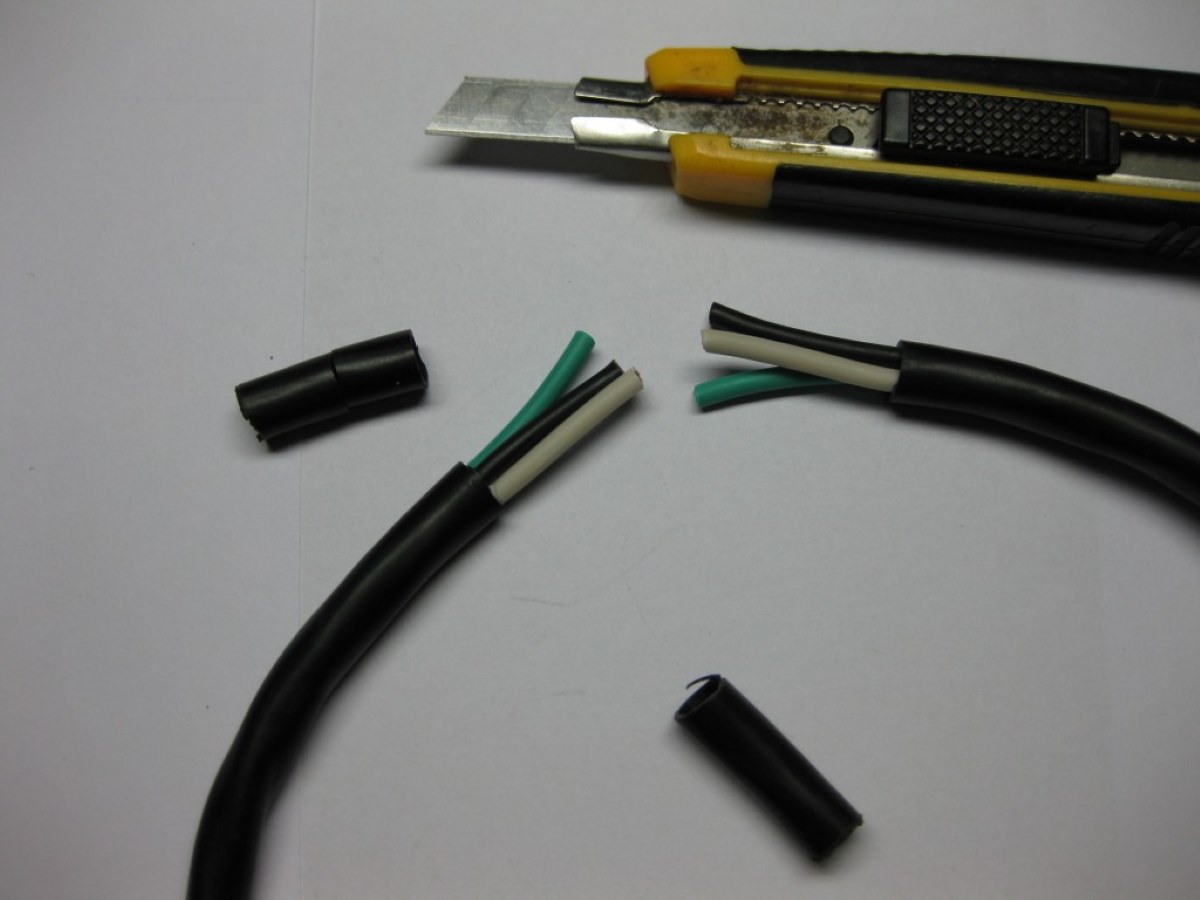

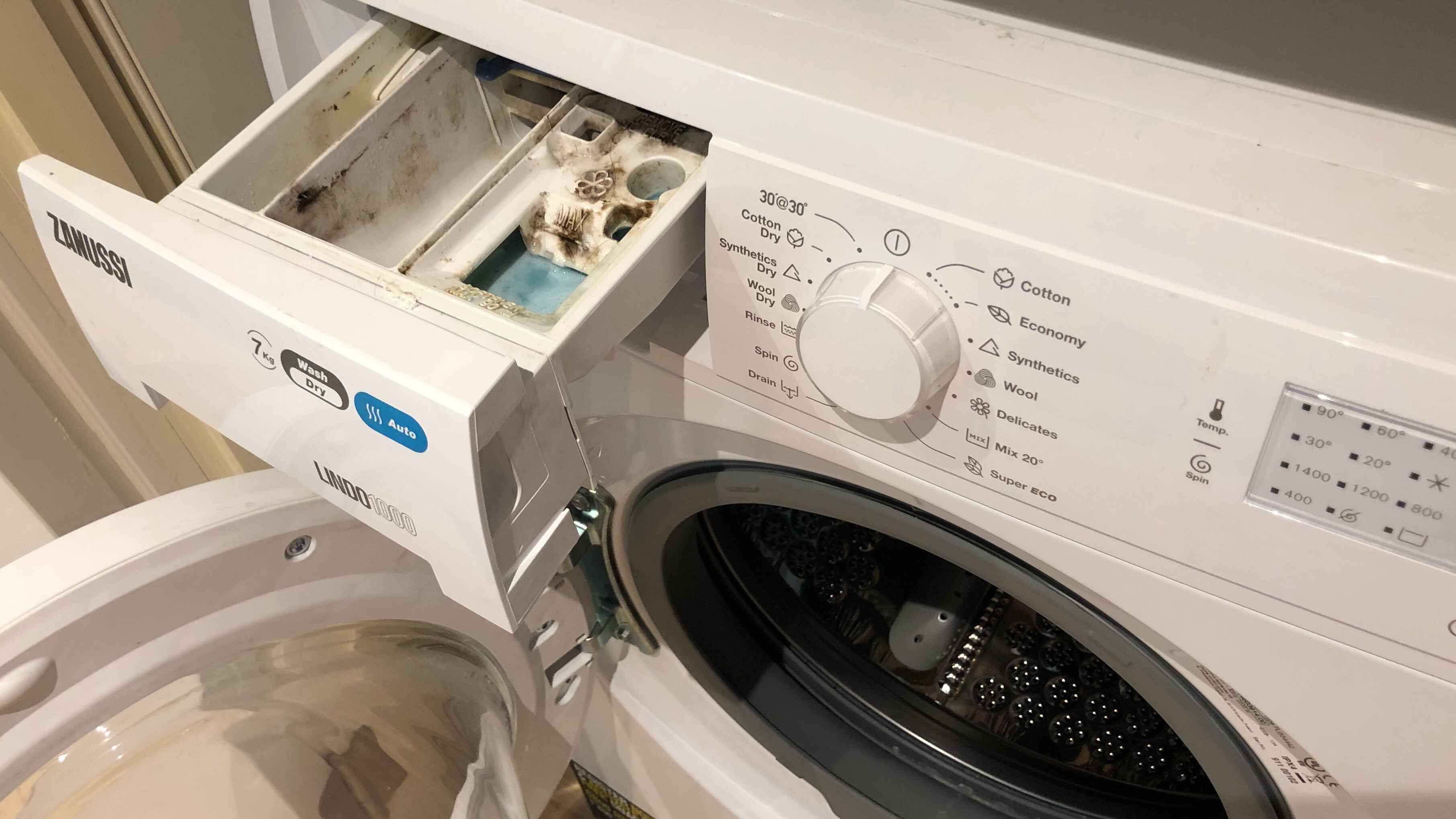
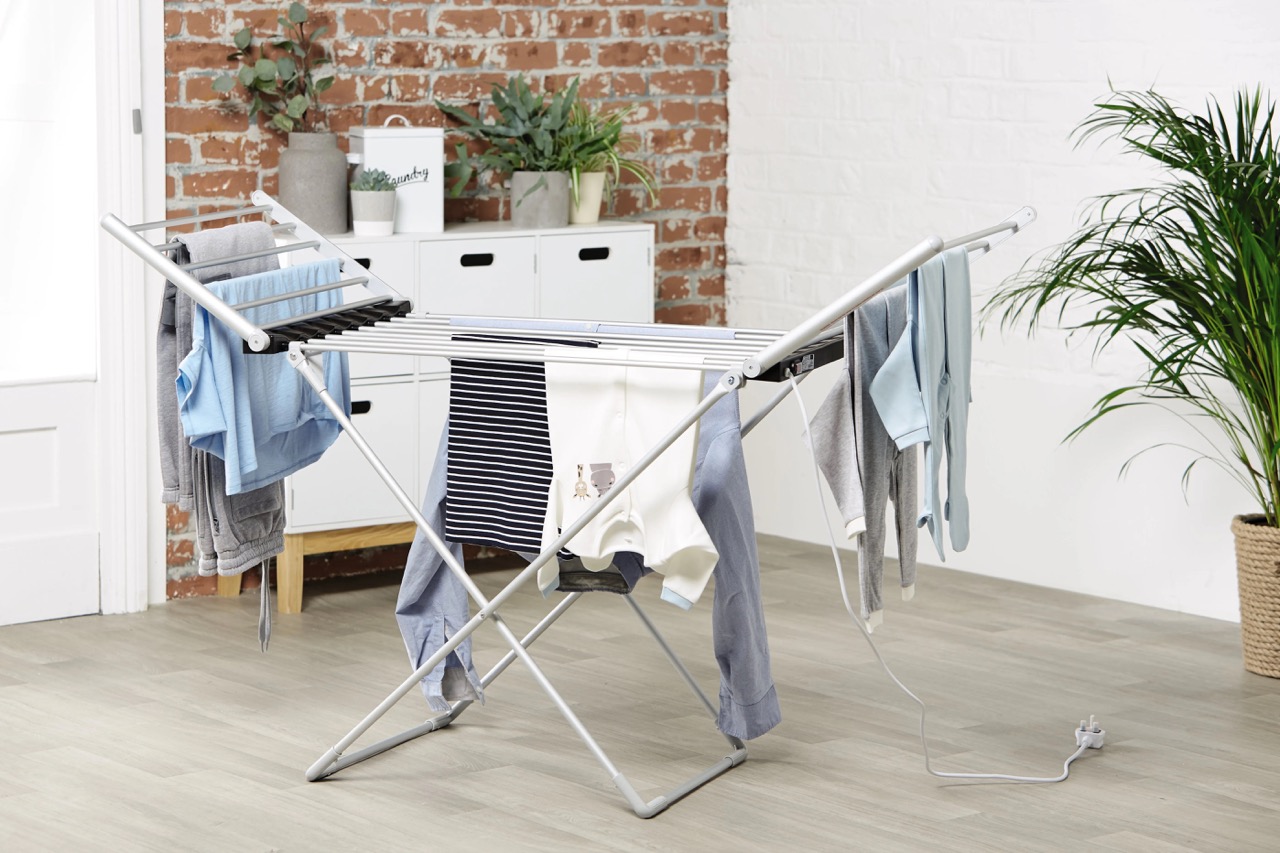
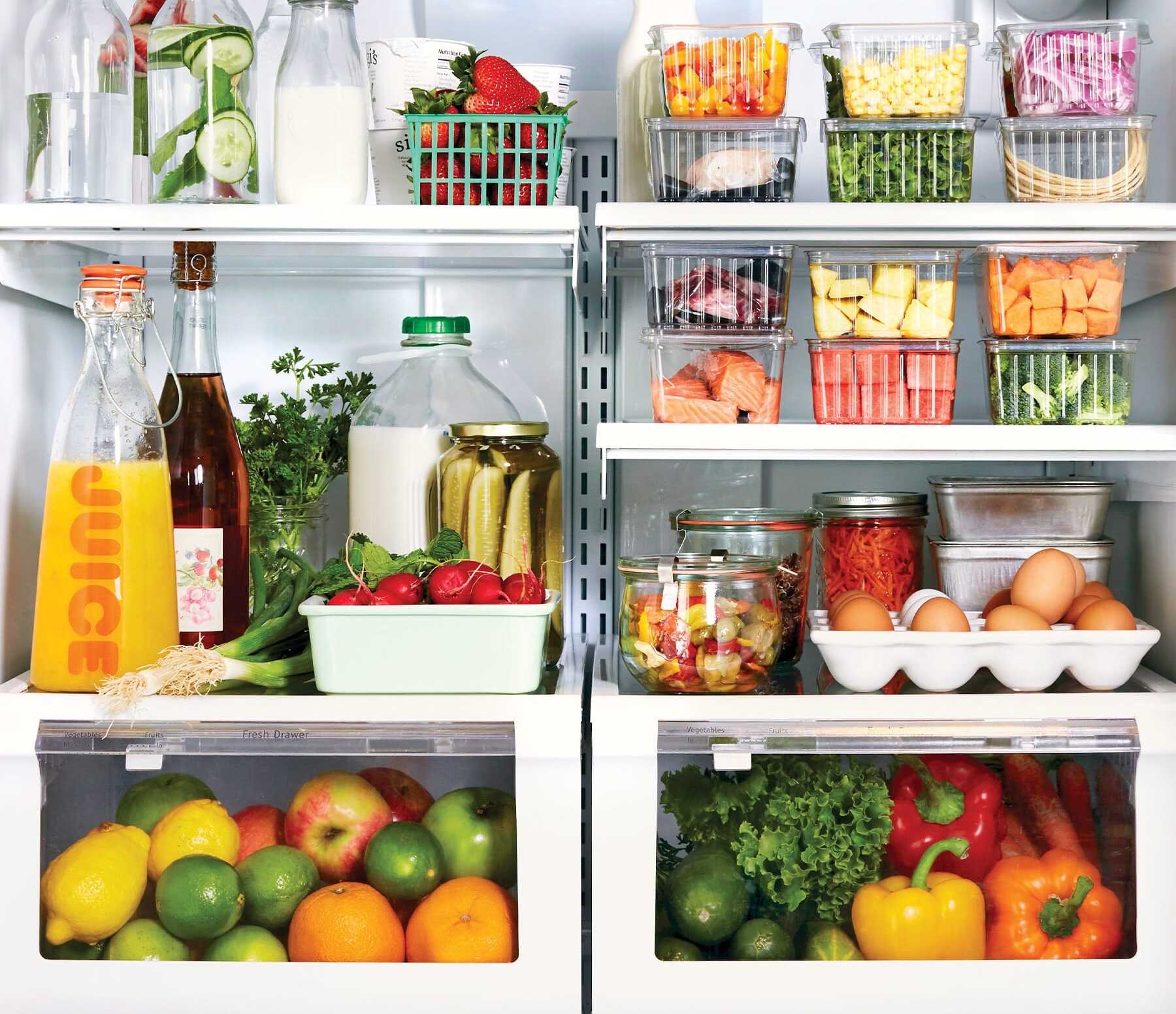


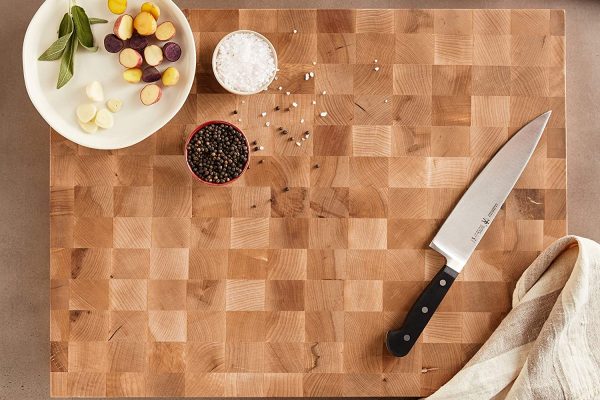

0 thoughts on “Speedy Kitchen Cleaning Tips To Cut Cleaning Times In Half”